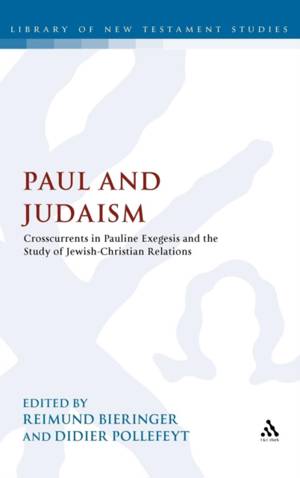
- Afhalen na 1 uur in een winkel met voorraad
- Gratis thuislevering in België vanaf € 30
- Ruim aanbod met 7 miljoen producten
- Afhalen na 1 uur in een winkel met voorraad
- Gratis thuislevering in België vanaf € 30
- Ruim aanbod met 7 miljoen producten
Zoeken
Paul and Judaism
Crosscurrents in Pauline Exegesis and the Study of Jewish-Christian Relations
€ 296,95
+ 593 punten
Omschrijving
The New Perspective on Paul cleared Judaism contemporary to Paul of the accusation that it was a religion based on works of righteousness. Reactions to the New Perspective, both positive and critical, and sometimes even strongly negative, reflect a more fundamental problem in the reception of this paradigm: the question of continuity and discontinuity between Judaism and Christianity and its assumed implications for Jewish-Christian dialogue. A second key problem revolves around Pauls understanding of salvation as exclusive, inclusive or pluralist. The contributions in the present volume represent at least six approaches that can be plotted along this axis, considering Pauls theology in its Jewish context. William S. Campbell and Thomas R. Blanton consider Pauls Covenantal Theology, Michael Bachman provides an exegetical study of Paul, Israel and the Gentiles, and Mark D. Nanos considers Paul and Torah. After this chapters by Philip A. Cunningham, John T. Pawlikowski, Hans-Joachim Sander, and Hans-Herman Henrix give particular weight to questions of Jewish-Christian dialogue. The book finishes with an epilogue by pioneer of the New Perspective James D.G. Dunn.
Specificaties
Betrokkenen
- Uitgeverij:
Inhoud
- Aantal bladzijden:
- 272
- Taal:
- Engels
- Reeks:
Eigenschappen
- Productcode (EAN):
- 9780567072801
- Verschijningsdatum:
- 10/05/2012
- Uitvoering:
- Hardcover
- Formaat:
- Ongenaaid / garenloos gebonden
- Afmetingen:
- 156 mm x 234 mm
- Gewicht:
- 557 g

Alleen bij Standaard Boekhandel
+ 593 punten op je klantenkaart van Standaard Boekhandel
Beoordelingen
We publiceren alleen reviews die voldoen aan de voorwaarden voor reviews. Bekijk onze voorwaarden voor reviews.







